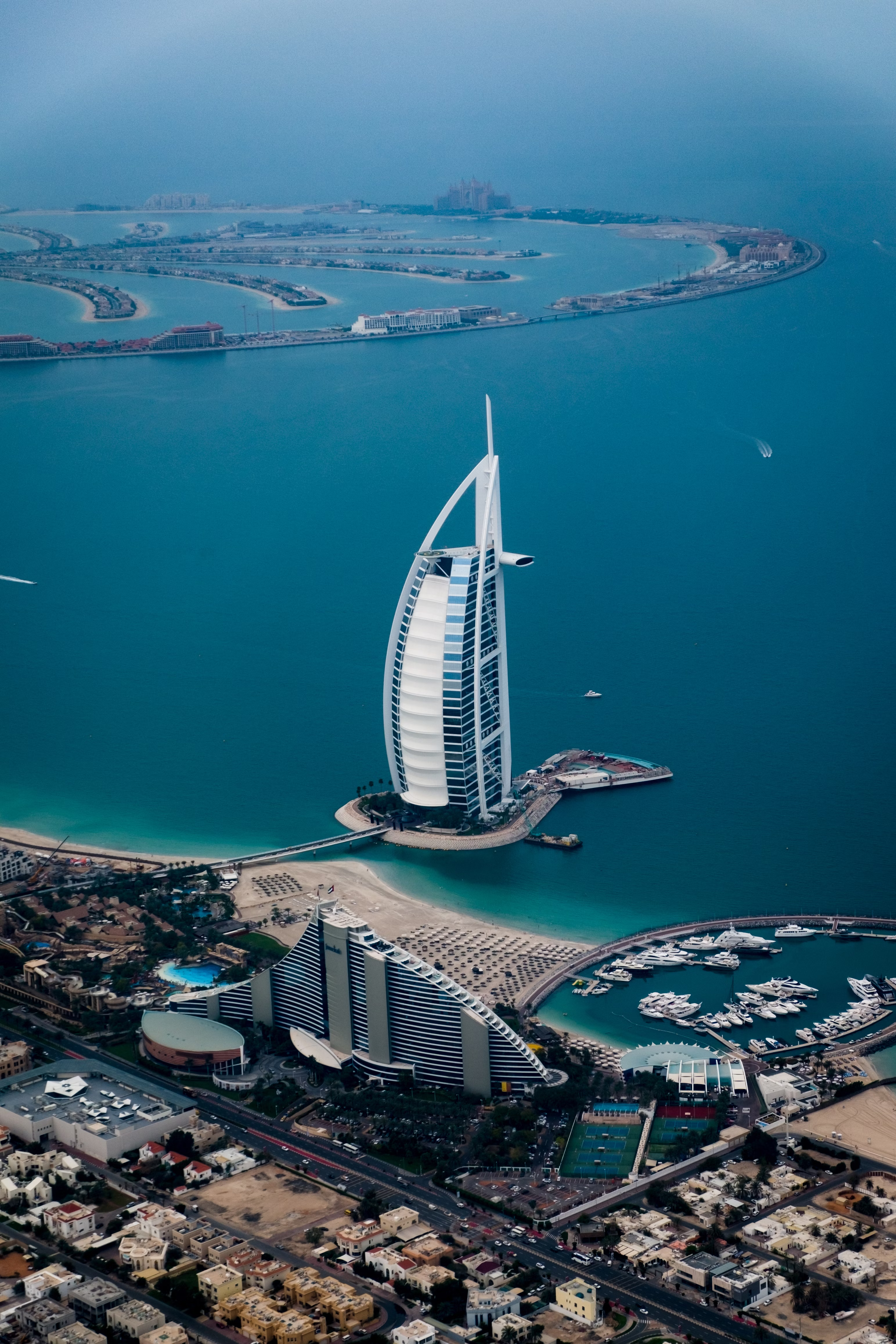London’s skyline is a tapestry of history, culture, and modernity. From the majestic clock tower of Big Ben to the architectural wonder of the London Eye, the city’s landmarks are more than just tourist attractions—they are symbols of London’s rich heritage, resilience, and innovation. This guide will explore the must-see landmarks that define London’s skyline, delving into their history, significance, and enduring allure.
1. Big Ben and the Houses of Parliament
Big Ben, one of London’s most iconic symbols, has been ringing out over the city since the mid-19th century. Though often used to refer to the entire clock tower, Big Ben is actually the name of the bell housed within the Elizabeth Tower, part of the Palace of Westminster. Alongside the bell, the Houses of Parliament (also known as the Palace of Westminster) are key structures in British political history and architecture.
- Historical Significance: The Houses of Parliament date back to the 11th century, though the current building was completed in the 19th century after a fire destroyed much of the original palace in 1834. Designed in a Gothic Revival style by Sir Charles Barry and Augustus Pugin, the structure embodies British resilience and the evolution of British governance.
- Why It’s a Must-See: Big Ben and the Houses of Parliament are symbols of British democracy and historical continuity. The chiming of Big Ben’s bell on the hour is a familiar and comforting sound to locals, and visitors can enjoy spectacular views of the structure from Westminster Bridge or take a guided tour of the Houses of Parliament to explore its majestic interiors and chambers.
Pro Tip: To capture the best photo of Big Ben and the Houses of Parliament, head to the South Bank of the Thames or Westminster Bridge for an uninterrupted view of the Elizabeth Tower with the river in the foreground.
2. The Tower of London and Tower Bridge
Few landmarks in London are as steeped in history as the Tower of London. Established by William the Conqueror in 1078, this medieval fortress has served as a royal residence, a prison, and even a treasury. Today, the Tower of London is a UNESCO World Heritage Site and one of the city’s most visited attractions.
- Historical Significance: The Tower of London has played a pivotal role in British history. It was once a royal palace and later served as the prison for some of England’s most famous figures, including Anne Boleyn. Today, it houses the Crown Jewels—a spectacular collection of royal regalia that has been used in coronations for centuries.
- Why It’s a Must-See: Visitors can explore the Tower’s dark and fascinating history with a Beefeater tour led by Yeoman Warders, or gaze at the dazzling Crown Jewels. Next to the Tower of London, Tower Bridge is an engineering marvel from the 19th century and one of the world’s most recognizable bridges. With its iconic towers and bascule system that raises the bridge for river traffic, it offers breathtaking views of the Thames and beyond.
Pro Tip: For an unforgettable experience, visit the Tower Bridge Exhibition to walk along its high-level glass walkway, giving you panoramic views of the river and city below.

3. Buckingham Palace
The official residence of Britain’s monarch, Buckingham Palace is both a working royal palace and a major tourist attraction. Built in 1703 and expanded in the 19th century, it has been the home of British royalty since Queen Victoria’s reign in 1837.
- Historical Significance: Buckingham Palace is at the heart of British monarchy and governance. Throughout the years, it has hosted royal ceremonies, state visits, and celebrations, including the annual Trooping the Colour. The palace has also been the center of British morale, with the royal family making public appearances on the balcony during times of national celebration and unity.
- Why It’s a Must-See: The Changing of the Guard ceremony, held at the palace’s forecourt, is a spectacle of British pageantry that draws crowds daily. For visitors in the summer months, the State Rooms are open for tours, allowing a rare glimpse into the palace’s opulent interiors and the treasures of the royal collection.
Pro Tip: Arrive early to secure a good viewing spot for the Changing of the Guard ceremony, or visit nearby Green Park or St. James’s Park for a peaceful escape with views of the palace.
4. The London Eye
The London Eye, or Millennium Wheel, has quickly become one of the most recognizable structures on the London skyline. This 135-meter-tall Ferris wheel was built to celebrate the new millennium in 2000 and offers visitors panoramic views of London’s landmarks.
- Significance: Though a relatively new addition to the city’s skyline, the London Eye is a symbol of modern London’s embrace of innovation. It has become the city’s most popular paid attraction, visited by millions of tourists each year.
- Why It’s a Must-See: The London Eye offers a unique vantage point from which to view the entirety of London, from the River Thames to Buckingham Palace, the Shard, and even as far as Windsor Castle on a clear day. The 30-minute rotation allows visitors ample time to take in the views and capture stunning photographs of the city’s layout.
Pro Tip: Book your tickets in advance to skip the lines, and consider visiting at sunset for breathtaking golden hour views over the River Thames and surrounding cityscape.
5. St. Paul’s Cathedral
A masterpiece of Baroque architecture, St. Paul’s Cathedral is one of London’s most revered landmarks. Designed by Sir Christopher Wren and completed in 1710, St. Paul’s has been a place of worship, celebration, and mourning for the British people.
- Historical Significance: St. Paul’s Cathedral has witnessed some of the most significant events in British history, including the funerals of Lord Nelson and Winston Churchill, and the wedding of Prince Charles and Lady Diana Spencer. The cathedral’s massive dome dominates London’s skyline and remains an architectural wonder.
- Why It’s a Must-See: Visitors can climb the dome to the Whispering Gallery, Stone Gallery, and finally, the Golden Gallery for sweeping views of the city. The crypts below the cathedral house tombs of notable figures like Sir Christopher Wren and Sir Alexander Fleming, offering a fascinating look at British history and culture.
Pro Tip: Visit early in the day for fewer crowds, and take a guided tour to learn about the building’s rich history and architecture. Also, be sure to check out the St. Paul’s Oculus, a 270-degree film experience exploring the history of the cathedral.

6. The Shard
As London’s tallest building and a symbol of modernity, The Shard offers an experience unlike any other in the city. Designed by architect Renzo Piano and completed in 2012, the Shard’s glass façade soars over London, reshaping the city’s skyline.
- Significance: The Shard is emblematic of London’s forward-thinking attitude and commitment to architectural innovation. The structure houses offices, residences, restaurants, and the five-star Shangri-La Hotel, offering luxury experiences alongside breathtaking views.
- Why It’s a Must-See: Visitors can take a high-speed elevator to The View from The Shard, an observation deck on floors 68-72, which provides unparalleled views of London and beyond. It’s one of the best spots to appreciate London’s old and new landmarks together.
Pro Tip: For a memorable experience, book a meal at one of the Shard’s restaurants, such as Aqua Shard or Oblix, where you can enjoy fine dining with spectacular views.
7. The British Museum
The British Museum is one of the world’s largest and most comprehensive museums, housing millions of artifacts that span centuries and civilizations. Though it may not be a skyscraper, it is an iconic landmark and a vital part of London’s cultural skyline.
- Historical Significance: Established in 1753, the British Museum’s collections include the Rosetta Stone, the Elgin Marbles, and countless other treasures that offer insights into human history, art, and culture. The museum itself is an architectural gem, with its famous Great Court and impressive neoclassical façade.
- Why It’s a Must-See: The museum offers an educational journey around the world without leaving London. From ancient Egypt and Greece to Asia and the Americas, the British Museum’s collections provide a global perspective on art, culture, and history.
Pro Tip: Admission to the British Museum is free, though certain special exhibits require tickets. To make the most of your visit, consider joining a guided tour or picking up a free audio guide.
8. Westminster Abbey
Another landmark steeped in history, Westminster Abbey is not only an architectural marvel but also a site of great historical and spiritual significance. Since its founding in the 10th century, the abbey has been the venue for coronations, royal weddings, and state funerals.
- Historical Significance: Westminster Abbey is the final resting place for many of Britain’s greatest historical figures, including Isaac Newton, Charles Darwin, and numerous kings and queens. It has been the setting for every British coronation since 1066, and its Gothic architecture is a marvel of medieval craftsmanship.
- Why It’s a Must-See: The abbey’s interiors are a treasure trove of history, with ornate tombs, stunning stained-glass windows, and intricate carvings. Visitors can also see the *Poet’s Corner*, a section dedicated to literary figures like *William Shakespeare*, *Charles Dickens*, and *Jane Austen*.
Pro Tip: Purchase tickets in advance to skip the line, and consider visiting during Evensong—a traditional choral service held in the late afternoon—to experience the abbey’s unique atmosphere and acoustics.

9. The Globe Theatre
For fans of Shakespeare and theater, the Globe Theatre is a must-visit. This faithful reconstruction of the original Elizabethan playhouse transports visitors back to the time of Shakespeare, offering an authentic experience of 16th-century theater.
- Historical Significance: Originally built in 1599, the Globe Theatre was the venue for many of Shakespeare’s plays. The current reconstruction, opened in 1997, stays true to the original design and serves as both a working theater and a tribute to the Bard’s legacy.
- Why It’s a Must-See: Watching a performance at the Globe Theatre is an immersive experience, allowing visitors to stand in the yard (like Elizabethan groundlings) or sit in the galleries. The open-air design and period-accurate productions create an unforgettable experience.
Pro Tip: Check the schedule in advance, as performances are seasonal. If you’re attending in summer, bring a hat and sunscreen, as the theater is open-air.
Conclusion: London’s Unmatched Skyline
From medieval castles to modern skyscrapers, London’s skyline offers a rich array of landmarks that reflect its vibrant history, culture, and innovation. Each of these landmarks is a piece of the city’s story, giving travelers a well-rounded view of London’s unique character. Whether you’re a first-time visitor or a seasoned traveler, these iconic landmarks promise to make your trip to London unforgettable.
Related stories:
Catch up on the top stories and travel deals by subscribing to our newsletter!











Leave a Reply